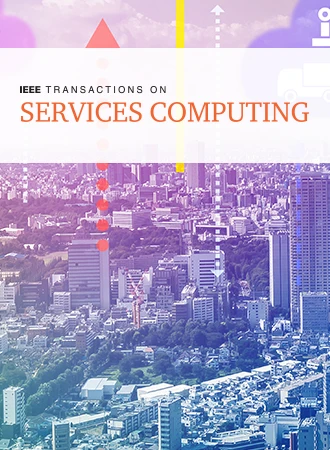TFEGRU: Time-Frequency Enhanced Gated Recurrent Unit With Attention for Cloud Workload Prediction
IF 5.5
2区 计算机科学
Q1 COMPUTER SCIENCE, INFORMATION SYSTEMS
引用次数: 0
Abstract
Accurate prediction of cloud workload is crucial for effective resource allocation in cloud computing. However, due to the complexity and high dimensionality of workloads in the cloud environment, achieving precise workload prediction is a complex and challenging problem. Current approaches to cloud workload prediction mainly rely on deep learning methods based on the Recurrent Neural Network (RNN), which struggle to capture the long-term dependencies inherent in workloads effectively. To tackle these challenges and overcome the limitations of existing methods, we propose an effective approach Time-Frequency Enhanced Gated Recurrent Unit with Attention (TFEGRU) for cloud workload prediction. First, we design a Time-Frequency Enhanced Block (TFEB) to capture complex workload patterns and extract features from both the frequency and temporal domains. Next, we integrate channel independent strategy and channel embedding into the model to adapt to high-dimensional workloads and enhance predictive performance. Finally, we apply a Gated Recurrent Unit (GRU) in conjunction with a multi-head self-attention mechanism to achieve accurate workload prediction. To validate the effectiveness of TFEGRU, comprehensive experiments are conducted using real-world traces from Google and Alibaba cloud data centers. The experimental results demonstrate that TFEGRU achieves accurate and efficient predictions across diverse cloud workloads, outperforming existing state-of-the-art methods.TFEGRU:用于云计算工作量预测的时频增强型门控注意递归单元
本文章由计算机程序翻译,如有差异,请以英文原文为准。
求助全文
约1分钟内获得全文
求助全文
来源期刊

IEEE Transactions on Services Computing
COMPUTER SCIENCE, INFORMATION SYSTEMS-COMPUTER SCIENCE, SOFTWARE ENGINEERING
CiteScore
11.50
自引率
6.20%
发文量
278
审稿时长
>12 weeks
期刊介绍:
IEEE Transactions on Services Computing encompasses the computing and software aspects of the science and technology of services innovation research and development. It places emphasis on algorithmic, mathematical, statistical, and computational methods central to services computing. Topics covered include Service Oriented Architecture, Web Services, Business Process Integration, Solution Performance Management, and Services Operations and Management. The transactions address mathematical foundations, security, privacy, agreement, contract, discovery, negotiation, collaboration, and quality of service for web services. It also covers areas like composite web service creation, business and scientific applications, standards, utility models, business process modeling, integration, collaboration, and more in the realm of Services Computing.
 求助内容:
求助内容: 应助结果提醒方式:
应助结果提醒方式:


